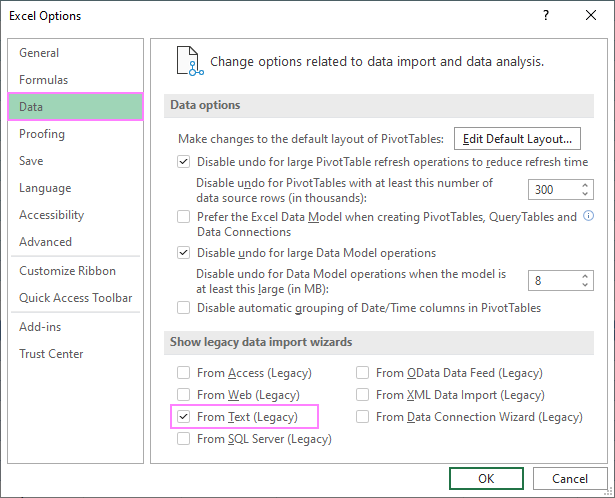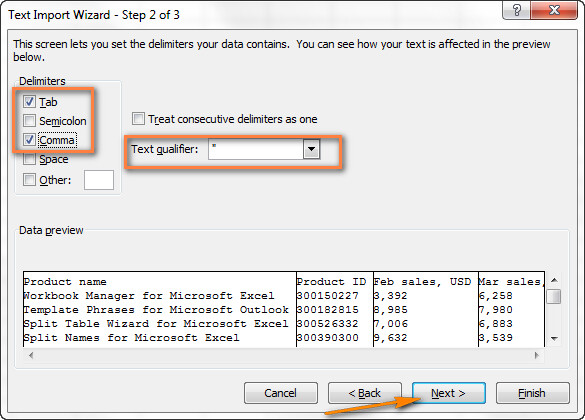
This is particularly helpful if you will be opening, over time, many CSV files that have the exact same format. This means that you can now use the Text to Columns wizard to separate the data in column A into individual columns.įinally, the third thing you can do is to create a macro that will open the CSV file and parse it for you. Note that the surround quote marks are gone, stripped out by the import process. The second is to go ahead and load the CSV file into Excel, such that each record is in column A. The first is to change the program that creates the CSV file so that it doesn't add the extra quote marks-you'll then be able to import with no problem. If you find that there are extra quote marks around each record in the CSV file, there are three things you can do. Pay attention to the Text Qualifier if you change it, you can immediately see at the bottom of the dialog box how Excel interprets the file's records. Choose Delimited, click Next, and then you can see what delimiters are chosen. When you choose to open this file within Excel, the Text Import Wizard is started. (Right-click on the CSV file in Windows, choose Open With | Choose Program, then choose Notepad.)Īnother way is to rename the CSV file so that its extension is not. The first is to simply open the CSV file with Notepad and look at each record. There are a couple of ways to verify this. This would cause everything in the record to be treated as a single field by Excel, which means it ends up in a single column when the CSV file is loaded. What does this have to do with the CSV file that seems to be loading incorrectly? It is very possible that the program creating the CSV file is putting a pair of quote marks around each record. In this case, the third record has only four fields, and the fourth record is interpreted to have only a single field. Given the effect that quote marks have, you can probably figure out how Excel interprets the third and fourth records. In other words, Excel ignores any commas that may appear between the quote marks. The second record has only two fields, "a,b,c,d" and "e." The inclusion of the quote marks around "a,b,c,d" causes Excel to treat the string as a discrete unit. So, how does Excel treat the incoming data? Consider, for a moment, if the CSV file contains the following four records:Īs far as Excel is concerned, the first record has five fields, separated by commas. You cannot override this automatic filtering when opening the file.

This makes sense after all, the file is supposed to contain comma-separated values (CSV).
#EXCEL TEXT IMPORT WIZARD NOT COMING UP WINDOWS#
When you open a CSV file in Excel (either by double-clicking in Windows or by using File | Open in Excel), the program treats any commas in the file as delimiters. To understand that, it is critical to understand how Excel opens CSV files. The reason for this behavior is probably quite simple and has to do with the format in which the data is stored in the CSV file by the non-Excel program.

Instead of the comma-separated values being in different columns, every record appears in a single column. The problem is that the file, when opened, isn't parsed by Excel. When Jan double-clicks the CSV file in Windows, Excel starts and then loads the file.

This file can then be opened in Excel for further analysis.


 0 kommentar(er)
0 kommentar(er)
